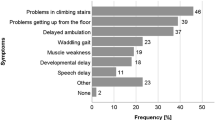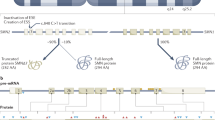Abstract
Latin America (LA) has a population of ~645 million people distributed over 33 countries with marked political, cultural and economic differences. In LA, patients with inherited neuromuscular diseases (NMDs) often do not have access to specialized medical centers and many of them go undiagnosed. General management and care of spinal muscular atrophy (SMA) patients in the region varies due to heterogeneous health care. An active generation of young clinical neurologists is being trained for the specialized care of SMA and other neuromuscular (NM) patients, both in the private and public sectors. The Euro-Latin-American Summer School of Myology (EVELAM) as well as efforts of professionals at large public centers in the major cities of LA have a leading role in this development. Different regional academic–scientific organizations as well as the expanding number of telethon centers and the creation of parent organizations, mostly concerning SMA, all together are contributing to the increased quality of the management of NMD patients. Over the past years, academic and clinical research, as well as the establishment of qualified centers for the molecular testing of NMD are pushing forward the creation of patient registries and the development of specific clinical trials, with Argentina and Brazil having a major role in this field. Nevertheless, increased awareness and further training of specialized health professionals are necessary to reach patients that are currently lacking care throughout the region.
This is a preview of subscription content, access via your institution
Access options
Subscribe to this journal
Receive 12 print issues and online access
$259.00 per year
only $21.58 per issue
Buy this article
- Purchase on Springer Link
- Instant access to full article PDF
Prices may be subject to local taxes which are calculated during checkout
Similar content being viewed by others
References
Monani UR, De Vivo DC . Neurodegeneration in spinal muscular atrophy: from disease phenotype and animal models to therapeutic strategies and beyond. Future Neurol 2014; 9: 49–65.
Cusin V, Clermont O, Gerard B, Chantereau D, Elion J . Prevalence of SMN1 deletion and duplication in carrier and normal populations: implication for genetic counselling. J Med Genet 2003; 40: e39.
Alias L, Barcelo MJ, Bernal S, Martinez-Hernandez R, Also-Rallo E, Vazquez C et al. Improving detection and genetic counseling in carriers of spinal muscular atrophy with two copies of the SMN1 gene. Clin Genet 2014; 85: 470–475.
Newsletter Institute of Myology. Available at: http://www.institut-yologie.org/en/newsletter/newsletter accessed on 27 January 2017.
Bueno KC, Gouvea SP, Genari AB, Funayama CA, Zanette DL, Silva WA Jr et al. Detection of spinal muscular atrophy carriers in a sample of the Brazilian population. Neuroepidemiology 2011; 36: 105–108.
Acevedo López AM, Zaldívar Vaillant T, Moreno F, Hernández-Chico C . Atrofia muscular espinal infantil. Introducción del diagnóstico molecular en Cuba. Rev Cubana Obstet Ginecol 1998; 25: 128–134.
Garófalo GN, Zaldívar VT, Vargas DJ, Rojas ME, Novoa LL . Atrofia muscular espinal en el niño. Rev Cubana Pediatr 2009; 81: n.3.
Camacho PCA . Enfermedad de Werdnig-Hoffman: a proposito de un caso con estadia prolongada. Rev Haban Cienc Méd 2009; 8: n.1.
Cantarelli dos Santos D, Maia Cavali PT, Mello Santos MA, Antonelli Lehoczki M, Junqueira Rossato A, Landim E . Tratamento cirúrgico da escoliose em pacientes com amiotrofia espinhal com parafusos pediculares (instrumental de 3ª geração) e complicações precoces. Coluna/Columna 2010; 9: 98–103.
Castiglioni C, Levicán J, Rodillo E, Garmendia MA, Díaz A, Pizarro L et al. Atrofia muscular espinal: caracterización clínica, electrofisiológica y molecular de 26 pacientes. Rev Med Chil 2011; 139: 197–204.
Munhoz da Rocha LE, Pudles E, Bonotto lampert H . Avaliação dos resultados do tratamento cirúrgico da escoliose na atrofia muscular espinhal tipo 2. Coluna/Columna 2011; 10: n.3.
Zaldívar Vaillant T, Garófalo Gómez N, Vargas Díaz J, Rojas Massipe E, Novoa López LM, Bermúdez Linares V . Frecuencia de algunas enfermedades genéticas en Neuropediatría. Rev Cubana Pediatr 2012; 84: 368–374.
Viñas CI, Martín I, Zaldivar VT, Garófalo N, Zayas M, Guerra R et al. Análisis genético molecular en Atrofia Muscular Espinal. Rev Chil Pediatr 2013; 84: 499–504.
Rodríguez I, Fuentes C, Rivas C, Fernanda Molina R, Constanza Sepúlveda C, Daniel Zenteno A . Rehabilitación respiratoria en el paciente neuromuscular: efectos sobre la tolerancia al ejercicio y musculatura respiratoria. Resultado de una serie de casos. Rev Chil Enferm Respir 2013; 29: n.4.
Valencia HD, Rendón Muñoz J, Pineda N, Ortiz B, Montoya JH, Cornejo JW . Características clínicas de los pacientes menores de 18 años con atrofia muscular espinal en Medellín. Acta Neurol Colomb 2016; 32: 9–17.
Freire Magalhães PA, Gusmão d´Amorim AC, Mendes AP, Albuquerque Ramos ME, Santos de Almeida LB, Menezes Bezerra Duarte MC . Dispositivos ventilatórios não invasivos em criança portadora de amiotrofia espinhal do tipo 1: relato de caso. Rev Bras Saúde Matern Infant 2015; 15: 435–440.
Zárate-Aspiros R, Rosas-Sumano AB, Paz-Pacheco A, Fenton-Navarro PA, Chinas-López S, López-Ríos JA . Case report: type I spinal muscular atrophy: Werdnig-Hoffmann disease. Bol Med Hosp Infant Méx 2013; 70: ene./feb.
Zatz M, de Paula F, Starling A, Vainzof M . The 10 autosomal recessive limb-girdle muscular dystrophies. Neuromuscul Disord 2003; 13: 532–544.
Alías L, Bernal S, Fuentes-Prior P, Barceló MJ, Also E, Martínez-Hernández R et al. Mutation update of spinal muscular atrophy in Spain: molecular characterization of 745 unrelated patients and identification of four novel mutations in the SMN1 gene. Hum Genet 2009; 125: 29–39.
Kim CA, Passos-Bueno MR, Marie SK, Cerqueira A, Conti U, Marques-Dias MJ et al. Clinical and molecular analysis of spinal muscular atrophy in Brazilian patients. Gen Mol Biol 1999; 22: n.4.
Medrano S, Monges S, Gravina LP, Alías L, Mozzoni J, Aráoz HV et al. Genotype-phenotype correlation of SMN locus genes in spinal muscular atrophy children from Argentina. Eur J Paediatr Neurol 2016; 20: 910–917.
Wang CH, Finkel RS, Bertini ES, Schroth M, Simonds A, Wong B et al. Participants of the International Conference on SMA Standard of Care. Consensus statement for standard of care in spinal muscular atrophy. J Child Neurol 2007; 22: 1027–1049.
Swoboda KJ, Scott CB, Crawford TO, Simard LR, Reyna SP, Krosschell KJ et al. SMA CARNI-VAL trial part I: double-blind, randomized, placebo-controlled trial of L-carnitine and valproic acid in spinal muscular atrophy. PLoS One 2010; 5: e12140.
Bladen CL, Salgado D, Monges S, Foncuberta ME, Kekou K, Kosma K et al. The TREAT-NMD DMD Global Database: analysis of more than 7,000 Duchenne muscular dystrophy mutations. Hum Mutat 2015; 36: 395–402.
Acknowledgements
We thank patients and their families for their support and Dr Roberto Caraballo for the critical reading of the manuscript. ALR is Principal Investigator from CONICET. Work in the laboratory of ALR is supported by grants from CONICET, FONCYT and The FSH Society grant FSHS-82015-03.
Author information
Authors and Affiliations
Corresponding authors
Ethics declarations
Competing interests
The authors declare no conflict of interest.
Rights and permissions
About this article
Cite this article
Monges, S., Rosa, A. Management of neuromuscular diseases and spinal muscular atrophy in Latin America. Gene Ther 24, 578–580 (2017). https://doi.org/10.1038/gt.2017.68
Received:
Revised:
Accepted:
Published:
Issue Date:
DOI: https://doi.org/10.1038/gt.2017.68



